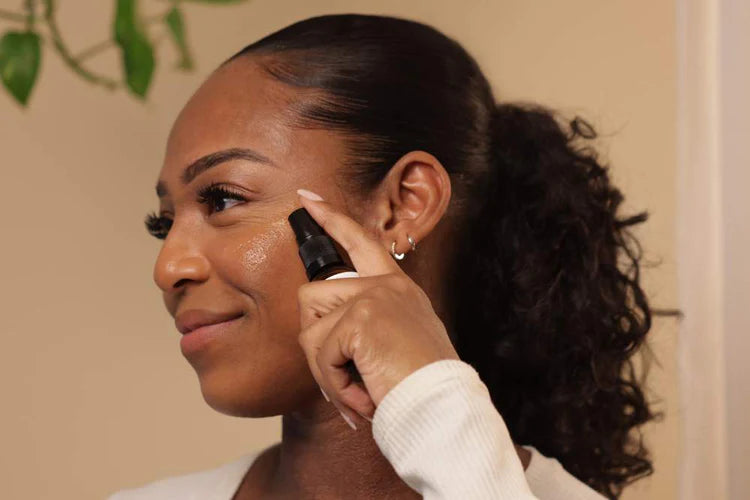Article: Circadian Rhythm 101: Why Your Skin Knows What Time It Is

Circadian Rhythm 101: Why Your Skin Knows What Time It Is
How Nature’s Clock Shapes Your Skin’s Health
As the clocks go back and daylight hours shorten, our bodies subtly shift—adjusting to darker evenings, cooler air, and changes in sleep. We know these shifts affect mood and energy; they also influence how skin functions, repairs, and renews itself.
This connection between time, light, and skin biology is the focus of a growing field known as circadian dermatology—the science of aligning skincare with the body’s natural rhythm. We spoke with Dr. Pauline Hili, a renowned expert in organic skincare with over 30 years of experience, to learn more.
Understanding Your Body’s Internal Clock
Your circadian rhythm is a 24-hour clock controlled by a master clock in the hypothalamus and synchronized with “peripheral clocks” throughout the body—including the skin. Light, temperature, mealtimes, and sleep help keep this rhythm in balance. When cues fall out of sync (travel, seasonal change, poor sleep), energy, mood, and skin can all be affected.
What Is Circadian Dermatology?
It explores how natural rhythms affect skin structure, behavior, and treatment response. By day, barrier defense and sebum rise; by night, DNA repair, cell turnover, and blood flow surge. Disruptions (time changes, shift work, blue light) reduce clock-gene expression and raise collagen-breaking enzymes—accelerating visible aging. Hence different routines for day vs. night.
- At night: cell turnover and barrier repair peak—ideal for retinoids, peptides, and omega-rich oils. Try Nourish London Argan Skin Rescue Oil or Argan Anti-Ageing Peptide Serum.
- By day: skin shifts to defense against UV, pollution, and blue light. Use Antioxidant Peptide Face Mist for on-the-go shielding, and apply Argan Anti-Ageing Peptide Serum in the morning—its kale-derived antioxidants and peptides support natural defenses.
Aligning routines with biology can enhance results, support repair, and minimize irritation.
How the Skin’s Natural Rhythms Work
The skin’s barrier also follows a circadian pattern.
- Hydration peaks at night, strengthening the barrier during sleep.
- Sebum rises toward evening, forming a protective layer.
- In the morning, antioxidant defenses increase to face environmental stressors.
Conditions like eczema, psoriasis, and acne can fluctuate with this rhythm—eczema often intensifies in the first hours of sleep.
Preparing Your Skin for the Clocks Going Back
Shorter days and indoor heating shift skin needs. Support its rhythm to maintain hydration, radiance, and balance.
1. Support vitamin D: With less sunlight, consider vitamin D-rich foods or a supplement in winter.
2. Combat dryness: Cooler air depletes moisture. In the evening, use Antioxidant Multi-Tasking Super Balm or Argan Skin Rescue Facial Oil to lock in hydration and restore lipids.
3. Boost mood & skin: Reduced daylight can affect wellbeing. Try small rituals—aromatherapy or ingredients like Griffonia extract—to support serotonin and skin vitality.
The Power of Sleep
During deep sleep, collagen is produced, cortisol balances, and daily damage is repaired. Support better sleep with:
- Limiting blue light before bed
- Keeping your room cool, dark, and quiet
- Relaxation rituals (stretching, herbal tea, breathing)
Better sleep means better skin—honor your rhythm to restore balance from within.
Listen to Your Skin
If you’re feeling sluggish, your skin might be, too. Focus on hydration, nourishment, and sleep to ease the time-change transition.
The Nourish London Perspective
Nourish London formulations work with natural cycles—supporting repair at night and protection by day. From bioactive peptides that boost overnight renewal to antioxidant-rich day creams defending against stressors, each product helps skin stay balanced, radiant, and in rhythm.



